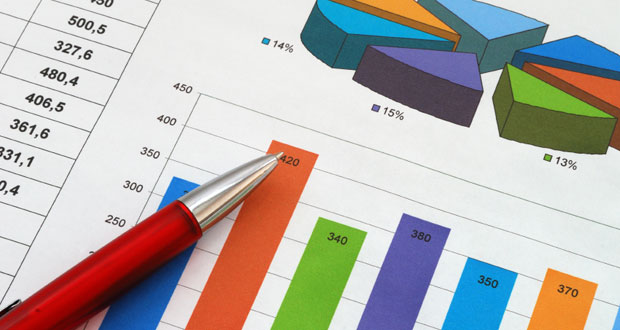NEW YORK – Total advertising expenditures in the first six months of 2010 rose 5.7 percent from a year ago and finished the period at $63.57 billion, according to data released by Kantar Media, the leading provider of strategic advertising and marketing information. Ad spending during the second quarter of 2010 was up 5.4 percent compared to last year.
“The rally in ad spending that has emerged from last year’s collapse continued at a steady pace through the second quarter, even as softening economic data on retail sales, spending and employment began to raise concerns about the outlook for consumer activity,” said Jon Swallen, SVP Research at Kantar Media. “Early figures from the third quarter indicate the advertising expansion is still maintaining its momentum and that is an encouraging sign for the industry.”
Measured Ad Spending By Media
Television media led the first half rebound. Spot TV expenditures jumped 25.1 percent, fueled by robust demand from auto and retail marketers and a cyclical upturn in political advertising. Spanish Language TV spending rose 14.6 percent, with gains driven by the World Cup event in June. Cable TV (+ 8.8 percent) and Network TV (+7.2 percent) benefited from selling more ad time and increased spending across a broad range of retail and consumer package goods categories.
Free Standing Inserts (FSIs) posted the second largest growth rate among the major media sectors. Expenditures rose 7.6 percent as CPG marketers aggressively targeted value-conscious consumers with couponing programs.
Within the Radio sector, results were divergent. Spending in National Spot Radio increased 16.8 percent while Local Radio was up 4.2 percent as telecom and financial service marketers shifted budgets into these segments. Network Radio registered a small decline of -0.4 percent. All radio types saw growth rates ease slightly during the second quarter.
Consumer Magazine expenditures bottomed out in March and the ensuing rebound in page counts helped push half-year spending to a 1.5 percent increase. Sunday Magazines (+13.1 percent) continued to reap additional money from prescription drug makers and home improvement retailers.
National Newspaper spending jumped 7.1 percent, primarily from gains at the Wall Street Journal. However, Local Newspaper spending was down 4.6 percent compared to last year and has now suffered declines for 19 consecutive quarters.
Percent Change in Measured Ad Spending1
MEDIA SECTOR
Media Type
(Sectors and types listed in rank order of H1 spending)
Jan-June
2010 vs. 2009
TELEVISION MEDIA 10.0%
— Network TV 7.2%
— Cable TV2 8.8%
— Spot TV3 25.1%
— Spanish Language TV4 14.6%
— Syndication – National -11.7%
MAGAZINE MEDIA5 1.6%
— Consumer Magazines 1.5%
— B-to-B Magazines -4.2%
— Sunday Magazines 13.1%
— Local Magazines -3.5%
— Spanish Language Magazines 4.8%
NEWSPAPER MEDIA6 -3.0%
— Local Newspapers -4.6%
— National Newspapers 7.1%
— Spanish Language Newspapers 2.8%
INTERNET (display ads only) 5.3%
RADIO MEDIA 6.3%
— Local Radio7 4.2%
— National Spot Radio 16.8%
— Network Radio -0.4%
OUTDOOR 2.8%
FSIs8 7.6%
TOTAL 5.7%
Source: Kantar Media
1. Figures are based on the Kantar Media Stradegy™ multimedia ad expenditure database across all measured media, including: Network TV (6 networks); Spot TV (125 DMAs); Cable TV (71 networks); Syndication TV; Hispanic Network TV (4 networks); Consumer Magazines (226 publications);,Sunday Magazines (7 publications); Local Magazines (27 publications); Hispanic Magazines (16 publications); Business-to-Business Magazines (313 publications); Local Newspapers (147 publications); National Newspapers (3 publications); Hispanic Newspapers (49 publications); Network Radio (5 networks); Spot Radio; Local Radio (32 markets); Internet; and Outdoor. Figures do not include public service announcement (PSA) data.
2. Cable TV figures do not include Hispanic cable networks.
3. Spot TV figures do not include Hispanic stations.
4. Spanish Language TV includes 4 Hispanic broadcast networks, 4 Hispanic cable network and 71 local Hispanic TV stations.
5. Magazine media includes Publishers Information Bureau (PIB) data and reflect print editions of publications.
6. Newspaper media figures reflect print editions of publications.
7. Local Radio includes expenditures for 32 markets in the U.S.
8. FSI data represents distribution costs only.
Measured Ad Spending by Advertiser
Expenditures for the ten largest advertisers increased 11.5 percent to $8.35 billion in the first six months of 2010. Among the Top 100 advertisers, a diversified group representing nearly one-half of the measured ad economy, spending was up 9.7 percent to $29.32 billion. The long-tail of small advertisers – defined as those outside the Top 1000 and a segment which accounts for more than one-fifth of all ad expenditures – lagged behind with just a 1.4 percent gain in their aggregate media investments. The skewed distribution illustrates the dependency of the current advertising recovery on large advertisers.
Procter & Gamble easily held onto its position as the largest advertiser and spent $1,501.2 million, a 31.1 percent increase versus a year ago. The company boosted marketing support for nearly all of its largest brands.
AT&T took the second spot in the rankings with expenditures rising 14.1 percent to $1,108.2 million. Much of the increase was due to a large TV ad buy in February’s Winter Olympics, while the second quarter was characterized by significant advertising reductions for core wireless products. Rival Verizon Communications slashed its half-year budgets by 12.3 percent, to $1,020.2 million.
The Top 10 included three auto manufacturers, the most from that sector in more than three years. General Motors had the largest growth rate as the company lifted spending 45.6 percent, to $1,043.0 million. Toyota Motor, seeking to rehabilitate its image after recalling millions of vehicles for safety hazards, raised its ad budgets by 23.3 percent, to $527.7 million. Ford Motor, which has recently been gaining market share, accelerated its expenditures by a comparatively modest 12.2 percent, to $524.1 million.
Top Ten Advertisers: January-June 20101
Rank Company
Jan – Jun 2010
($Millions)
Jan – Jun 2009
($Millions)
% Change
1 Procter & Gamble Co $1,501.2 $1,145.2 31.1%
2 AT&T Inc $1,108.2 $970.8 14.1%
3 General Motors Corp $1,043.0 $716.3 45.6%
4 Verizon Communications Inc $1,020.2 $1,163.2 -12.3%
5 Johnson & Johnson $708.9 $798.8 -11.2%
6 News Corp $700.9 $662.5 5.8%
7 Pfizer Inc $649.4 $558.5 16.3%
8 Time Warner Inc $571.1 $579.7 -1.5%
9 Toyota Motor Corp $527.7 $427.9 23.3%
10 Ford Motor Co $524.1 $467.0 12.2%
TOTAL2 $8,354.6 $7,489.8 11.5%
Source: Kantar Media
1. Figures do not include FSI, House Ads or PSA activity.
2. The sum of the individual companies may differ from the Total shown due to rounding.
Measured Ad Spending by Category
Expenditures for the ten largest advertising categories rose 7.3 percent in the first six months of 2010 and totaled $36.04 billion.
Automotive was the premier category among the Top Ten on both dollar volume and growth rate as spending surged 23.4 percent to $6,062.7 million amidst an improved environment for vehicle sales. Within the category, manufacturers and dealers had comparable rates of increase.
Telecom was the second largest category with half-year expenditures up 2.8 percent to $4,383.6 million. However, spending rates fell during the second quarter as leading wireless and satellite TV marketers pulled back.
Financial Services advertising jumped 11.3 percent, to $3,818.0 million. Results were helped by vigorous competition among credit card issuers and a marketing revival for consumer loan products. These offset lingering sluggishness in the retail banking segment.
Packaged goods categories continued to see higher advertising support as marketers adapted their strategies to evolving changes in consumer shopping behavior. Expenditures for Food & Candy were up 9.5 percent to $3,299.4 million, and spending for Personal Care Products increased 11.8 percent to $2,962.3 million.
Top Ten Advertising Categories: January-June 20101
Rank Category
Jan – Jun 2010
($Millions)
Jan – Jun 2009
($Millions)
% Change
1 Automotive $6,062.7 $4,913.4 23.4%
(Manufacturers)
$3,907.4 $3,134.1 24.7%
(Dealers)
$2,155.3 $1,779.3 21.1%
2 Telecom $4,383.6 $4,266.3 2.8%
3 Local Services $3,926.2 $3,719.7 5.5%
4 Financial Services $3,818.0 $3,430.4 11.3%
5 Miscellaneous Retail2 $3,385.2 $3,092.6 9.5%
6 Food & Candy $3,299.4 $3,011.8 9.5%
7 Direct Response $3,108.5 $3,245.6 -4.2%
8 Personal Care Pdts $2,962.3 $2,650.6 11.8%
9 Restaurants $2,889.6 $2,863.0 0.9%
10 Travel & Tourism $2,201.0 $2,388.7 -7.9%
TOTAL3 $36,036.5 $33,582.3 7.3%
Source: Kantar Media
1. Figures do not include FSI or PSA activity.
2. Miscellaneous Retail does not include these retail segments: Department Stores, Home Furnishing/Building Supply Stores.
3. The sum of the individual categories may differ from the total due to rounding.
Branded Entertainment
Kantar Media continuously monitors Branded Entertainment within network prime time and late night programming. The tracking identifies Brand Appearances and measures their duration and attributes. Given the short length of many Brand Appearances, duration is a more relevant metric than a count of occurrences for quantifying and comparing the gross amount of brand activity that viewers are potentially exposed to in the program versus the commercial breaks.
In the second quarter of 2010, an average hour of monitored prime time network programming contained nine minutes, thirty one seconds (9:31) of in-show Brand Appearances and 14:19 of network commercial messages. The combined total of 23:50 of marketing content represents 40 percent of a prime-time hour.
Unscripted reality programming had an average of 16:39 per hour of Brand Appearances as compared to just 5:16 per hour for scripted programs such as sitcoms and dramas. Late night network talk shows had an average of 13:55 per hour. The combined load of Brand Appearances and network ad messages in these late night shows was 29:38 per hour, or 49 percent of total content time.
Brand Appearances vs. Advertising: Q2 2010
(minutes:seconds per hour)
Brand Appearances
Network Ad Messages1
TOTAL
PRIME TIME NETWORK 9:31 14:19 23:50
Unscripted Programs 16:39 14:47 31:26
Scripted Programs 5:16 14:03 19:19
LATE NITE NETWORK
(Kimmel, O’Brien, Letterman)
13:55 15:43 29:38
Source: Kantar Media
1 Figures include network advertisements, station promotions and PSAs. Local commercial time is excluded.
The top five brands ranked by total amount of Brand Appearance time were Coca-Cola, 24 Hour Fitness Center, Yamaha Music Equipment, Chef Revival, and Starter.
About Kantar Media
Established in more than 50 countries, Kantar Media helps clients master the world’s multimedia momentum through analysis of print, radio, TV, internet, cinema, mobile, social media, and outdoor worldwide. Kantar Media offers a full range of media insights and audience measurement services through its global business sectors – Intelligence, Audiences, TGI and Custom. Kantar Media companies also include Compete, Cymfony and SRDS. Drawing upon the deepest expertise in the industry, Kantar Media tracks more than 3 million brands and delivers insight to more than 22,000 customers worldwide.







